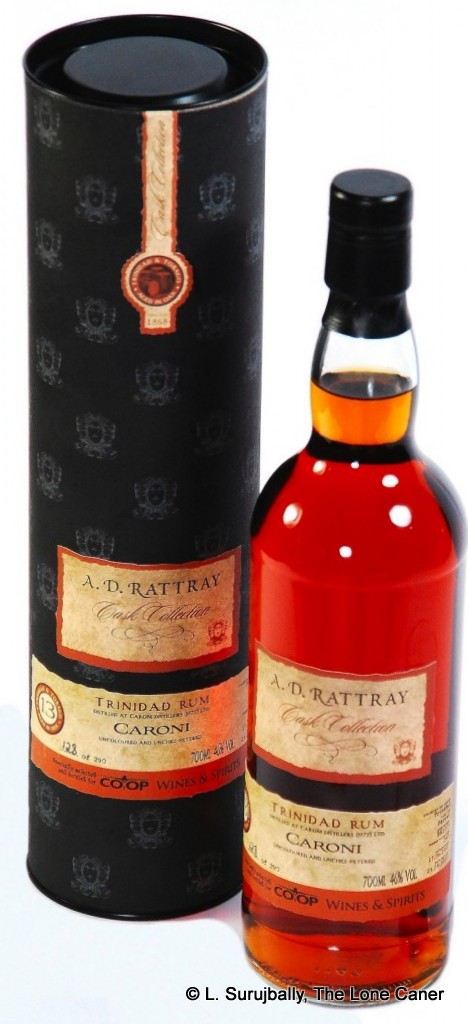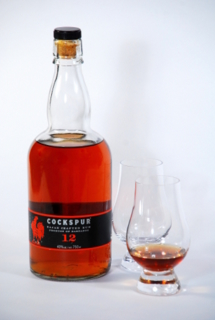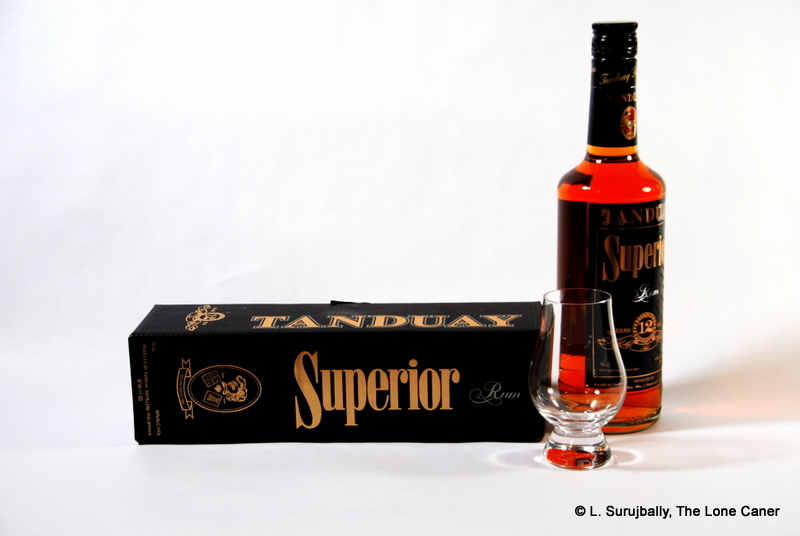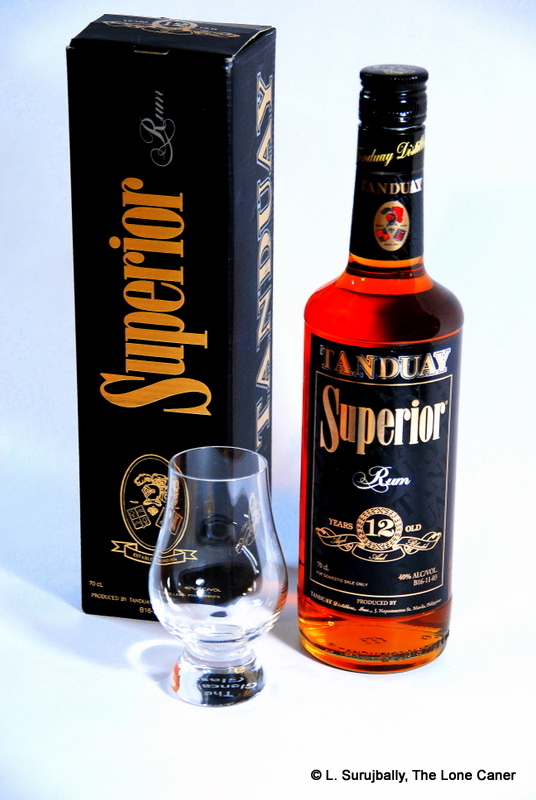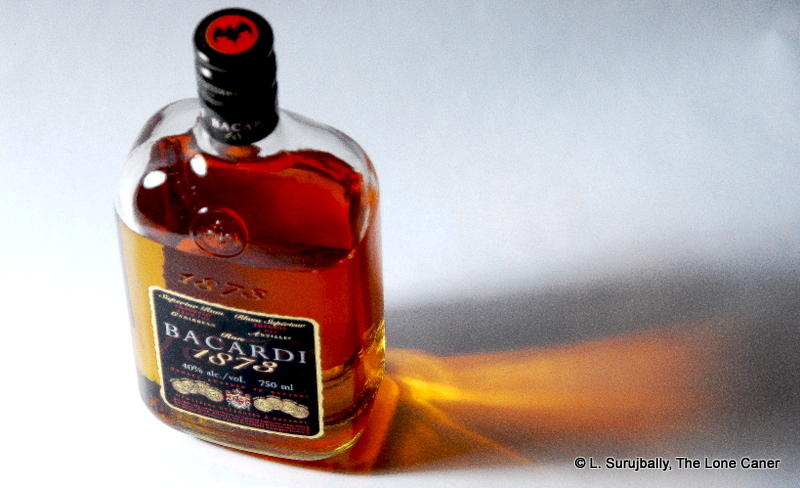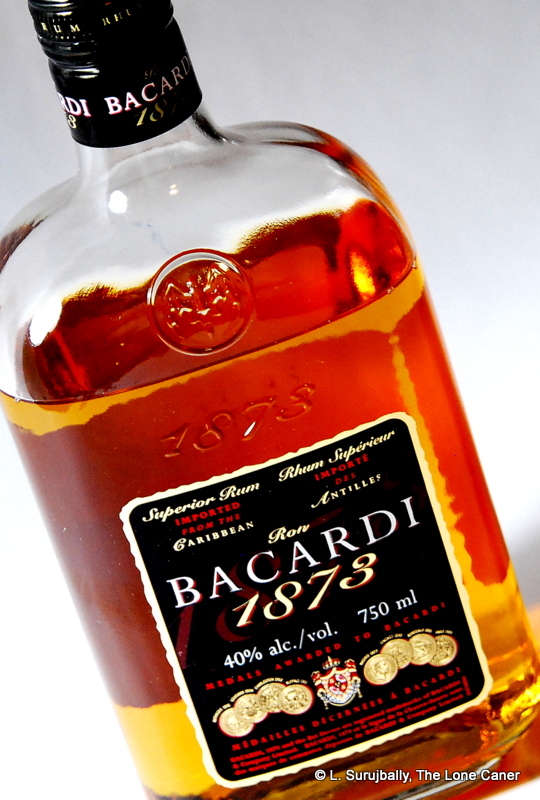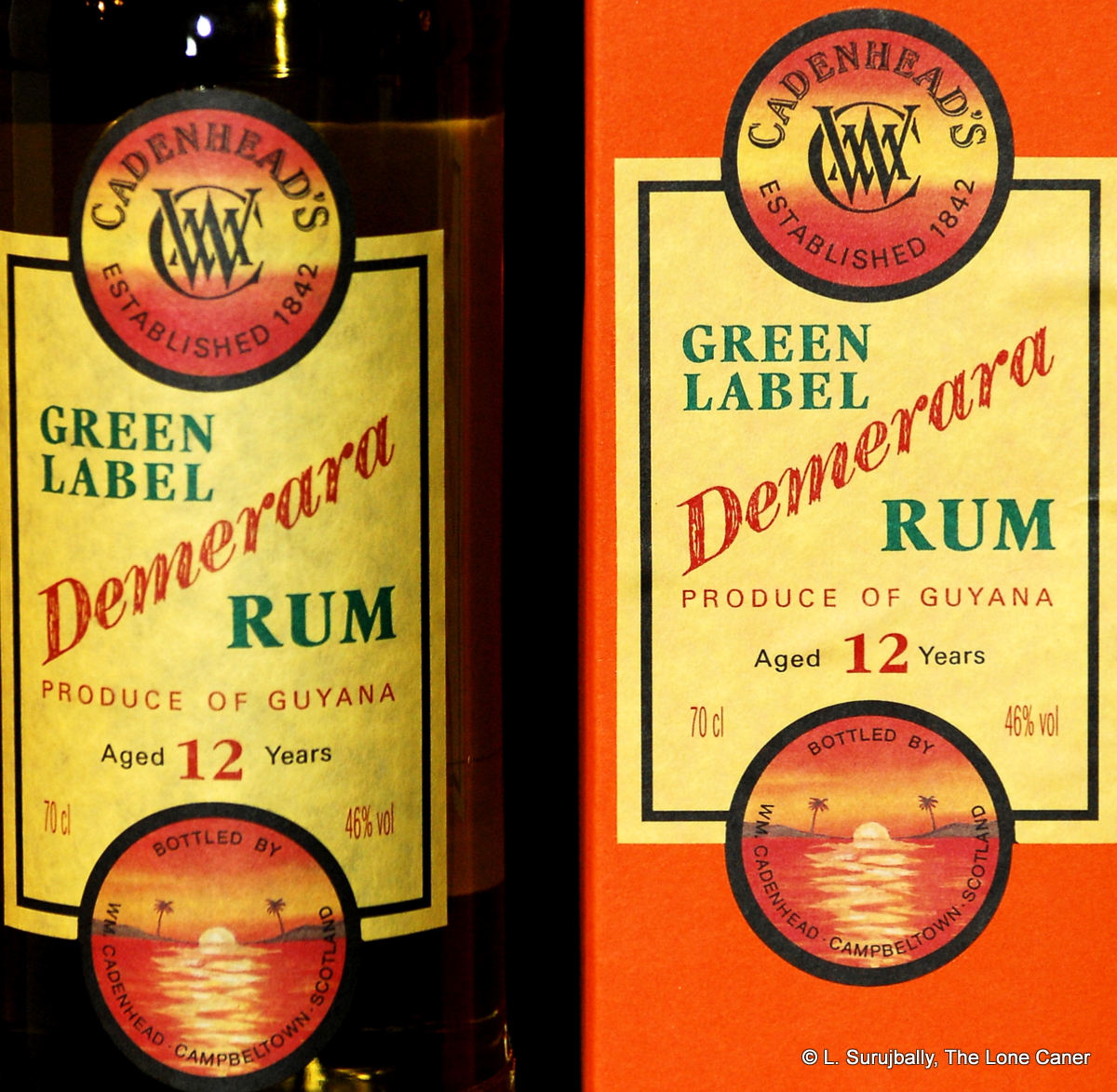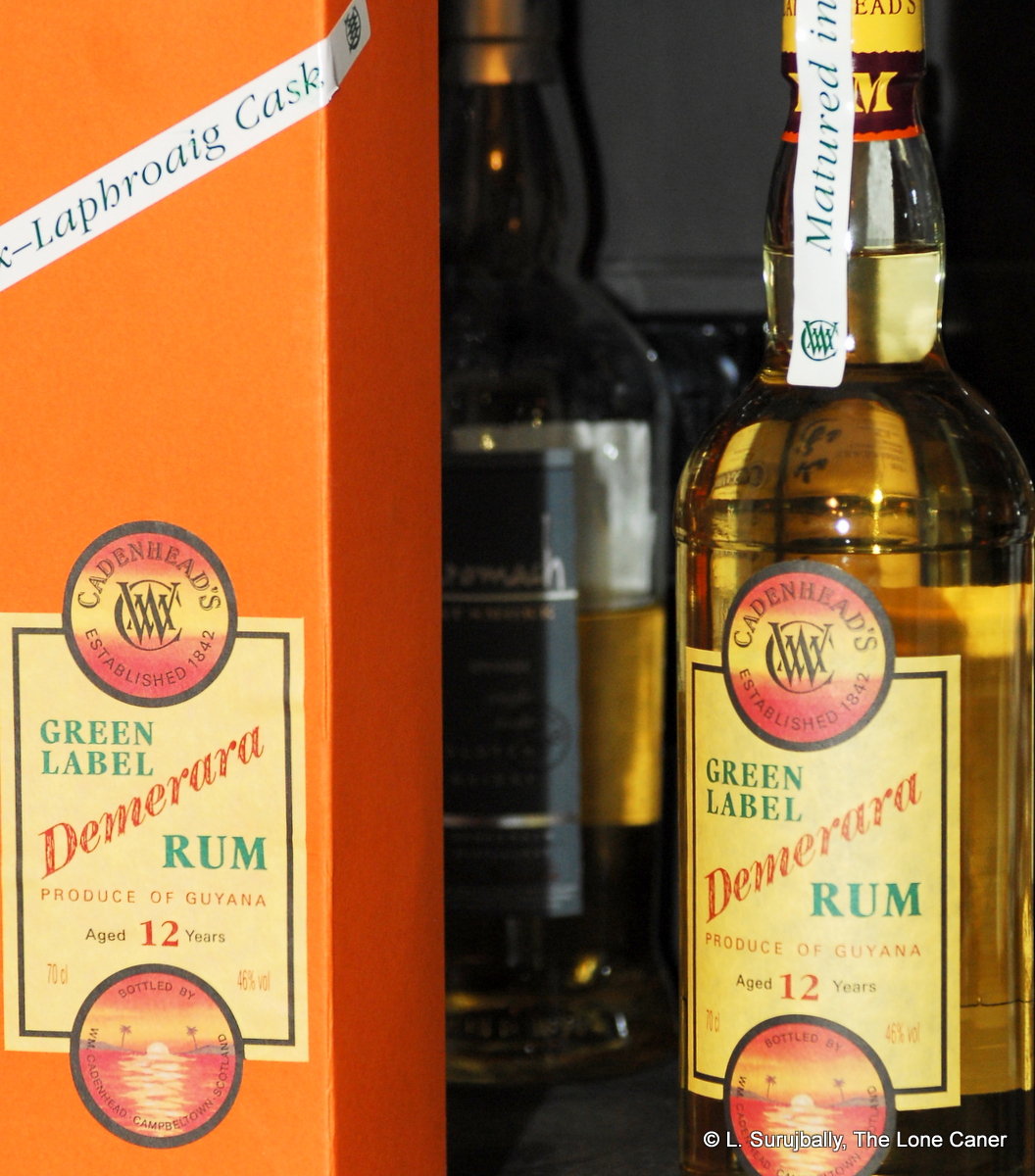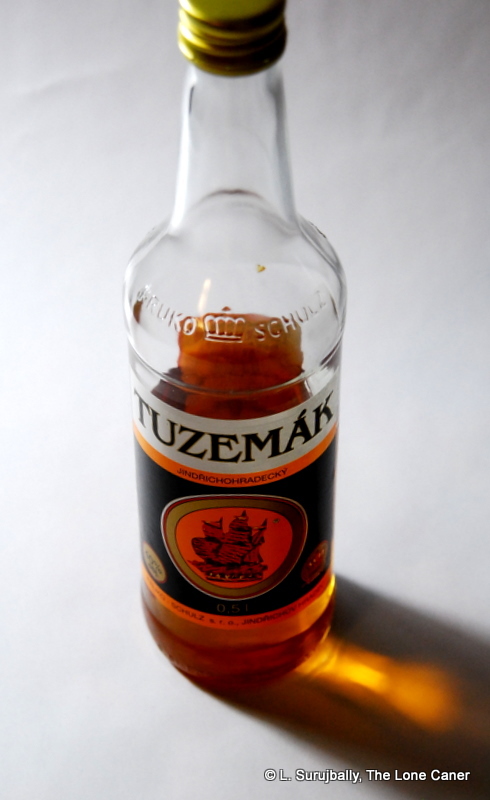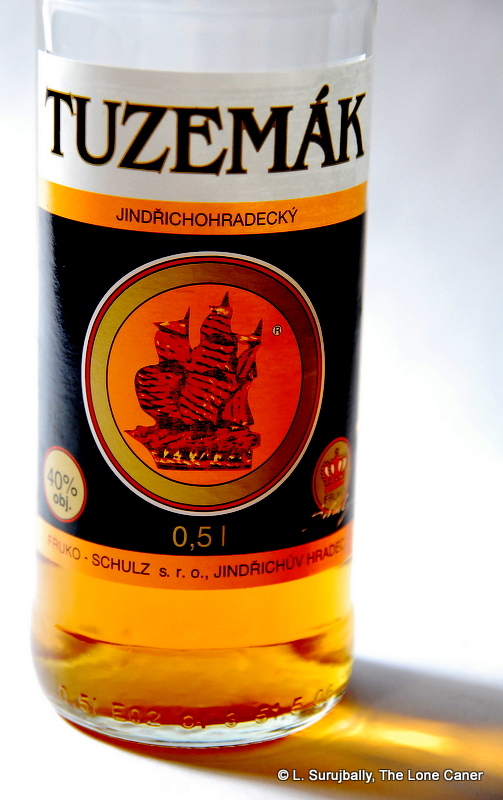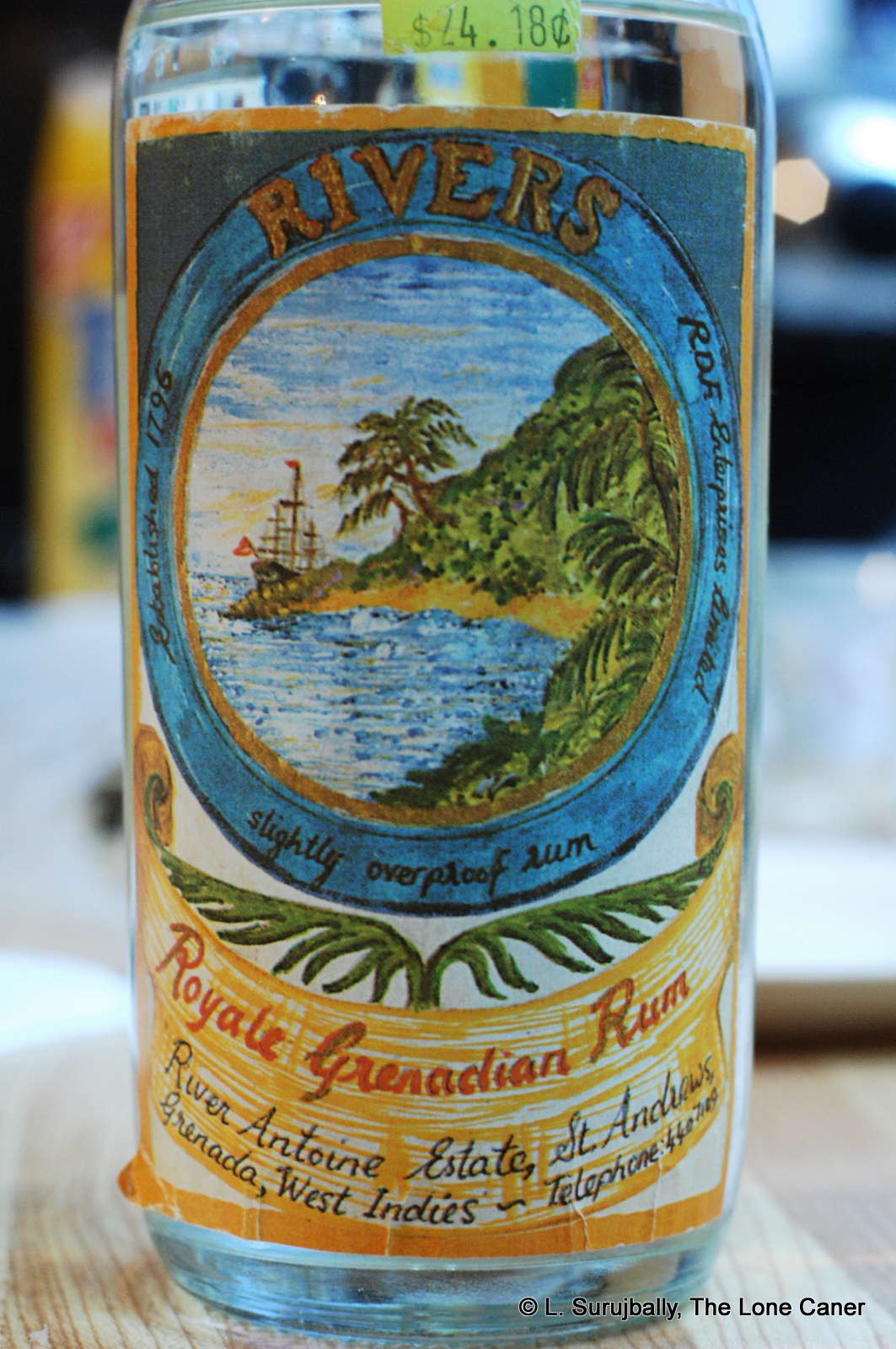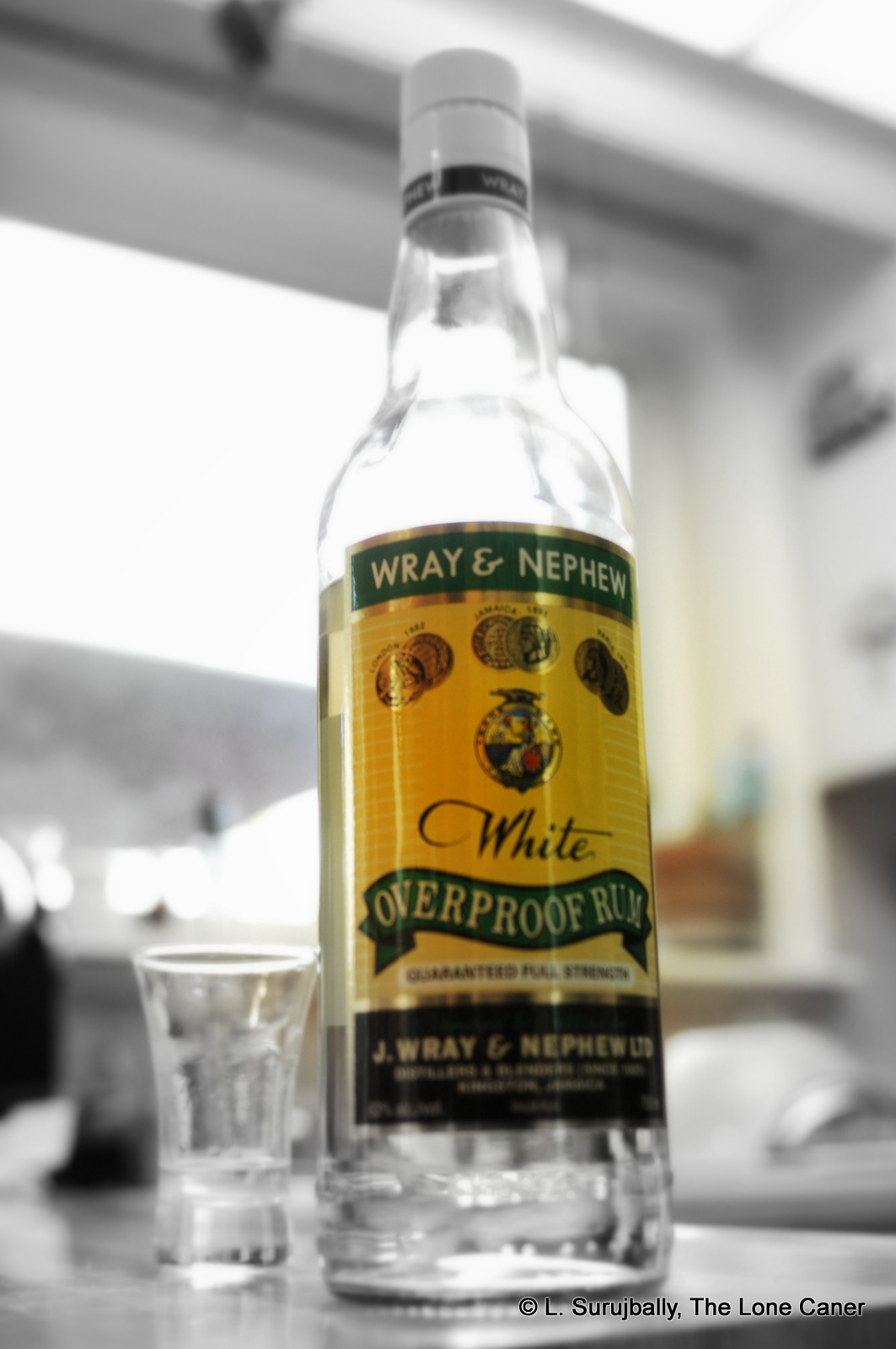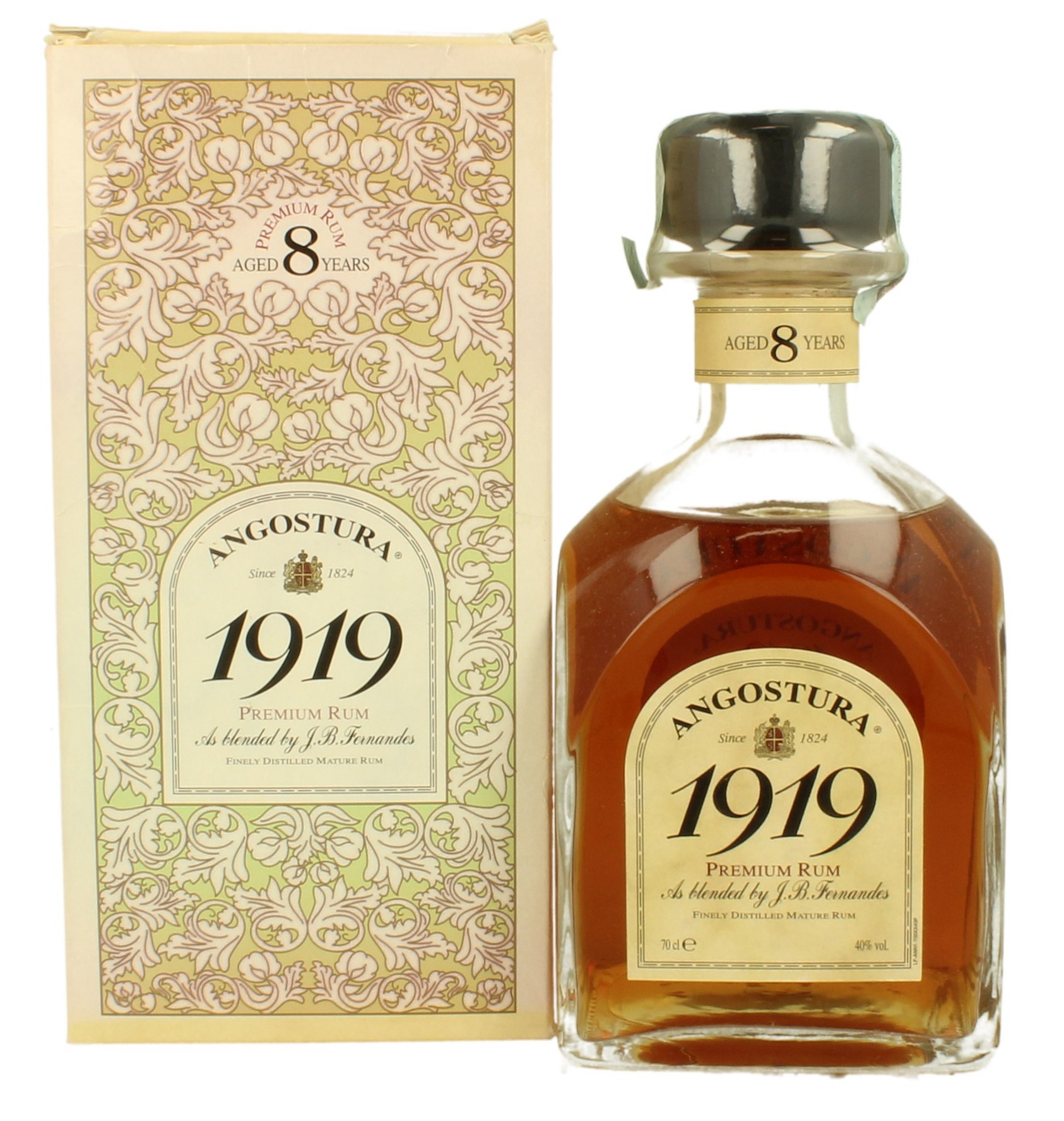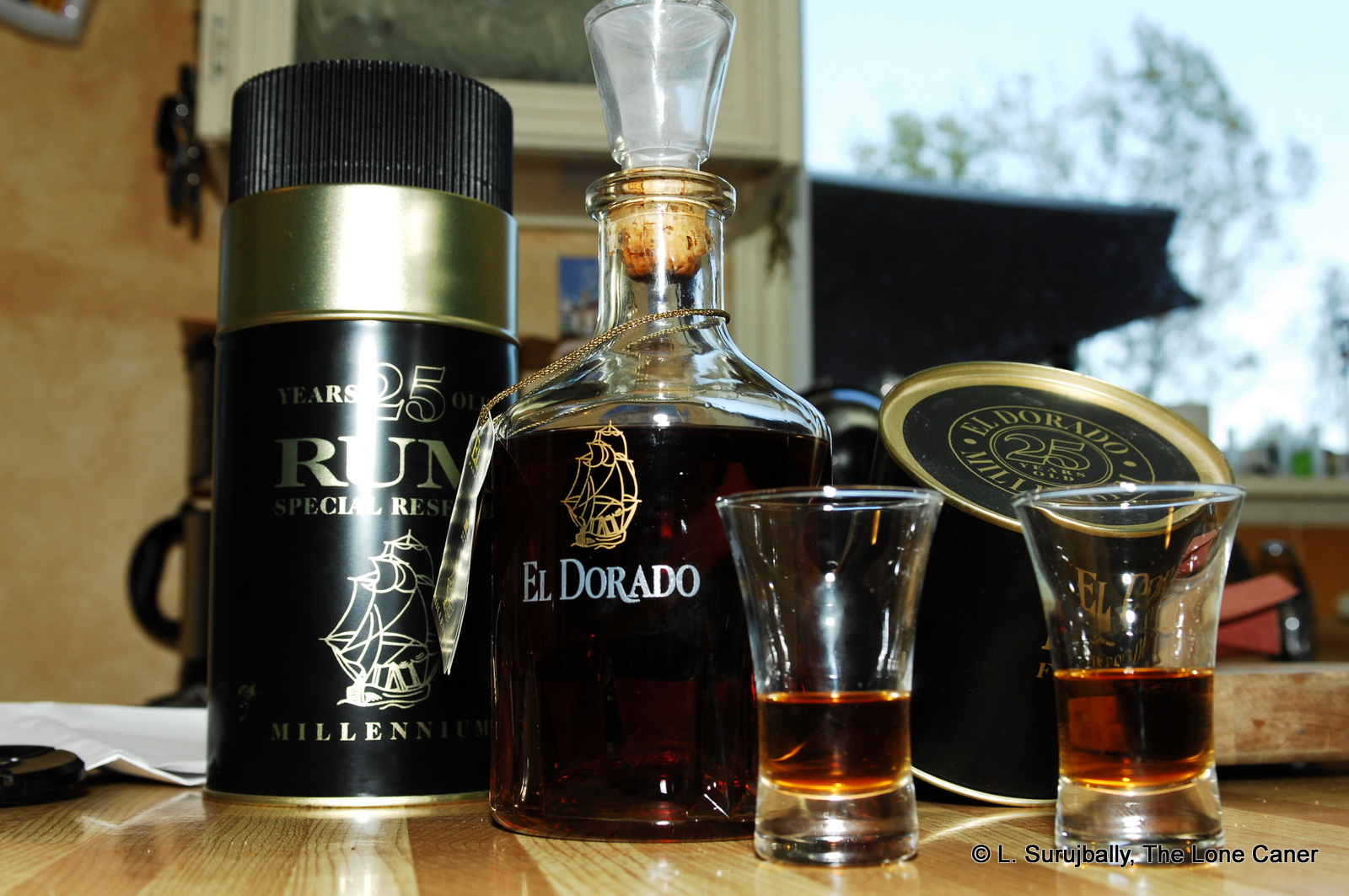A blended rum given enhanced flavour by the addition of Muscatel wine prior to final ageing. This creates an unusual almost-sipper that is not entirely to my taste but cannot be denied for what it is – an intriguing essay into the craft of playing around with the basic brown-sugar sweetness of rum to get something quite unique.
First posted 3 January 2011 on Liquorature.
Legendario Ron Añejo is a Cuban rum, but makes no concessions to people North of 49 who don’t habla, since nothing on the label is English (or French). Fortunately, as a travelling vagrant, I have a smattering of several additional tongues (and can curse pretty well in about fifteen or so, but never mind), so this was no barrier. The rum is exported around the world, and is an interesting entry into the world of aged spirits, not least because its flavor profile is so exceedingly odd.
This was a rum I bought as an impulse purchase, for about thirty bucks, and my opinion was that it’s a middling rung of the Legendario product ladder. There isn’t much of that to begin with: the entire line seems to consist of six rums both dark and white, with the Gran Reserva 15 year old being the top end. The Ron Añejo is a rum that blends a 47% solera with rums that are one, four and six years old, and then a small smidgen of Muscatel wine is added, after which the resultant is aged for fifteen days in oaken casks prior to bottling. While produced in Cuba, it is marketed primarily out of Spain and although I’m not sure, I suspect that this final ageing takes place there also.
Legendario poured out as amber brown from an opaque dark-brown bottle with a cheap tinfoil cap. In the glass it exhibited a touch of oily film, yet devolved into remarkably thin legs that scooted back down rather quickly. I regarded it with some surprise, not sure what to make of this: usually when you see a filmy sheen develop on the sides of your glass, the legs tend to be rather lazy, but not here. So was Legendario a rum with good body or not?
The nose suggested it might be. I didn’t care for it on an initial sniff – I was hit by a deep and cloying fruitiness, like overripe papayas or even the Australian Bundie, neither of which is on my list of all-time favourites – and this proves why it is so necessary never to let your first try dictate your final opinion. Taking in the nose a second and third time, I got the same aroma, yes, but then it dissipated and mellowed out into scents of honey and dark sugars, infused with the sharper but muted tannins of oak. Not so much as to make it a bitter experience, just enough to prove it had been aged.
The taste was fascinating and continued on from the nose: the Añejo did in fact have a robust medium body, and was smooth and rich on the tongue, leaving a nice oily film that distributed a flavour reminiscent of cigars and tobacco (and oak). A smoky caramel-toffee flavour slowly developed and married into an emergent taste of cherries and ripe papaya. I was not entirely enamoured of this element: it was quite a fruity little number, perhaps too much so, and it was only when I did my customary research that it occurred to me that the added Muscatel – a black, quite sweet variety of grape – was in all likelihood responsible for these overripe fruity tastes I was getting hit with. I remain unimpressed with the effort while acknowledging its originality.
The fade was pretty good. Medium long and sweet, and while here again the hints of overripe fruit persisted, they were overshadowed by molasses and burnt sugar fumes that were a very pleasant way to have the Legendario go down.
What’s my opinion on this one? Tough call. I do not believe the Muscatel adds anything to it except differentiation from the crowd. It may be that there was simply too much of it, and it sort of crowded out other flavours, to the overall detriment of the whole rum. As a sipper, then, it’s borderline. As a mixer, if you take something with less than the normal amount of sugar in it – say, Coke zero or ginger ale or some such – it’ll probably make your day.
Americans, who have maintained their trade embargo of Cuba for longer than many residents of Florida have now been alive, cannot legally import any of the sterling products of the island nation, the most famous of which are cigars and rums (although I’m sure that aficionados get their stocks regardless). The Legendario is a better-than-middling product, to me: it is not on par with Havana Club’s barrel proof offerings, and I’d really like to give the Gran Reserva 15 year old a twirl on the dance floor – but it’s not bad for all that, even given its initially startling fruity nose. Legendario is nothing to break the embargo over, mind you – prospective purchasers of this rum in the USA can wait until the embargo inevitably gets lifted – but if you can get it, by all means snag a bottle.
(#060. 76/100) ⭐⭐⭐
Other Notes
A brief Company bio, taken from the Legendario website 2025.07.26
In 1919, the American company Cuban Alcohol Refining Company acquired some land, and on September 30 of that same year, the Santa Cruz Distillery was inaugurated with the aim of establishing a spirits and spirits factory. In 1937, it became the property of the Cuban Industrial Alcohol and Distillery Company SA, and in the 1940s, the distillery, which until then had been dedicated primarily to the production of industrial alcohol and spirits, began to develop and market new brands of beverages under the slogan “From producer to consumer.” In 1946, the Ron Legendario brand was born.
In 1934, Don Francisco Gerardo Smith acquired La Casa de las Culebras, a walled mansion in the center of Havana, which he used for rum production. In the first half of the 20th century, that mansion became one of the 116 rum factories in Cuba: Almacenes Ron Bocoy. Years later, the rums Santa Cruz Carta Blanca, Santa Cruz Carta Oro, and Ron Legendario began to be advertised under the slogan: “The Three Rum Champions,” according to a 1946 advertisement. Although Ron Legendario was already well-known, it wasn’t until 1976 that it was decided to produce it exclusively in Bocoy, due to its exquisite and traditional method of rum production and the excellent Extraseco, a perfect blend of aged spirits of different ages that reflects the origin of the Cuban sugarcane distillates, produced by the great rum master Luis Álvarez.
In 1952, Legendario first appeared on advertising posters
In 1989 the taller, slimmer bottle was introduced and adjusted to 700ml, probably to ensure access to the European market
In 1998, the Valencian company CEXVAL (Comercio Exterior Valenciano SA) became interested in Legendario rums, convinced that such high-quality products should be available worldwide. To this end, it acquired the Ron Legendario trademark and exclusive rights to market its entire range of products in Spain and the rest of the world. In 1999, the first bottles began to be exported from Cuba to Spain, under the identifying attributes of 100% Cuban origin. Commercial strategies were established for the introduction of all products in the range through the various distribution channels. This also paved the way for the corporate image of the new company, Legendario SL.
In 2005, the company began exporting ore internationally, entering new markets in countries such as Italy, France, Germany, and South Korea. It is currently present on four of the five continents.
In 2010, the bottles were tweaked yet again. The Ron Legendario bottle has the slender, graceful shape of the Royal Palm, Cuba’s national tree, while its unmistakable lines pay homage to the silhouette of Cuban women. The shape of the label is another easily recognizable Cuban attribute, as it was created in the shape of a Havana cigar band, an attractive and well known design.



